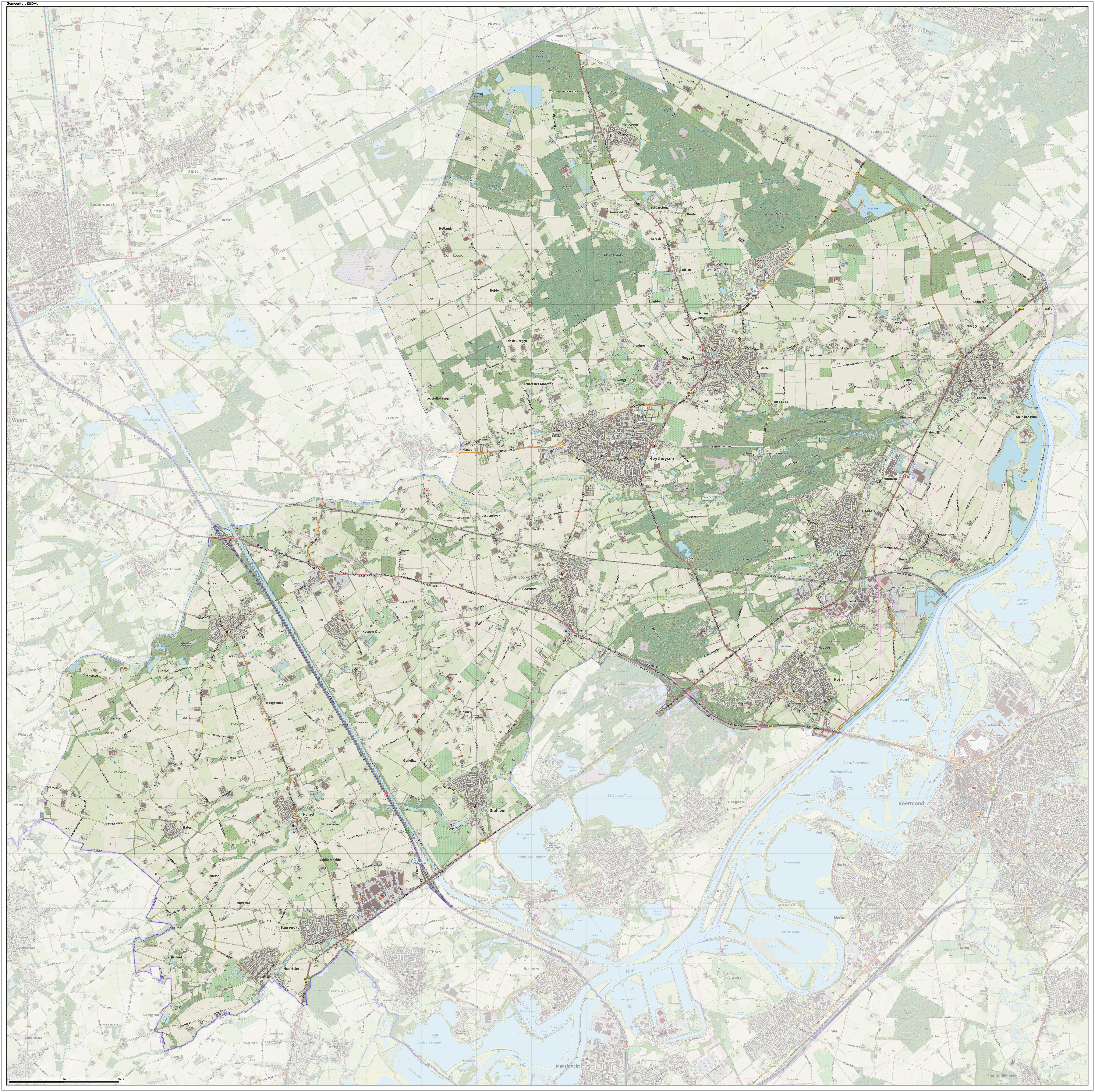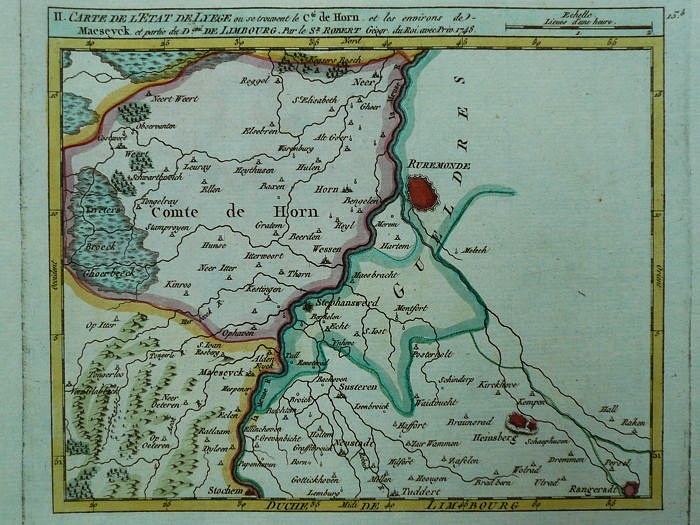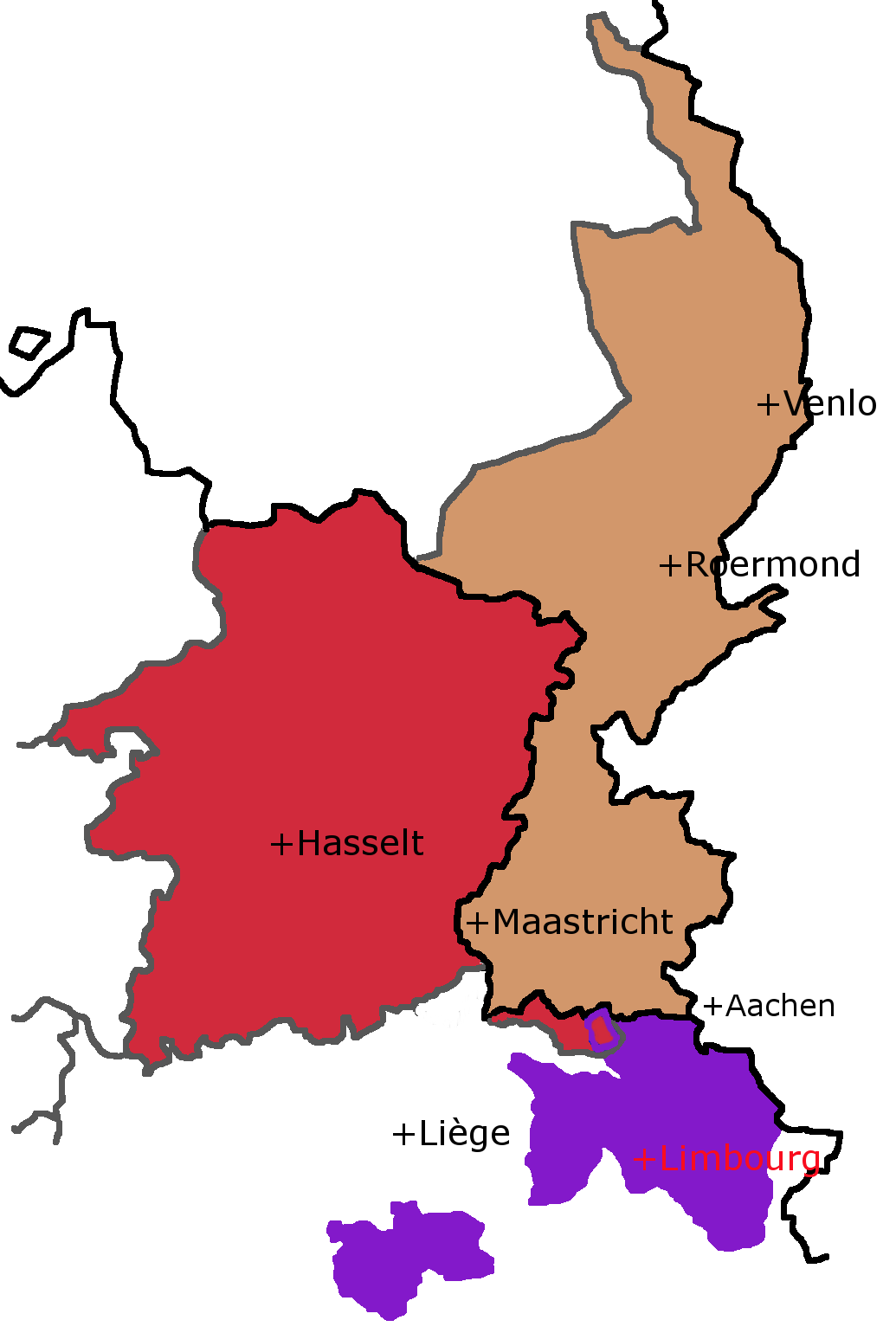|
Heythuysen
Heythuysen (; li, Heitse) is a town in the south-eastern Netherlands. History It was first mentioned in 1383 as Heythusen, and means "houses on the heath". It was located on the road from Venlo to Antwerp, and between the Bevelandse beek and the Tungelroyse beek. In 1243, it became a border town for the County of Horne. In 1680, Heythuysen became an independent ''heerlijkheid''. The Catholic St Nicolaas Church is a three-aisled church which was built shortly after 1504. In 1847, the current Gothic Revival tower was built. In 1927, the church was enlarged. Heythuysen was home to 275 people in 1840. Until it became a part of Leudal on 1 January 2007, Heythuysen was a separate municipality, including the villages of Baexem, Grathem Grathem (; li, Gratem) is a village in the Dutch province of Limburg. It is located in the municipality of Leudal, about 10 km west of Roermond. History It was first mentioned in 1116 as Grathem. The etymology is unclear. Grathem develope ... ... [...More Info...] [...Related Items...] OR: [Wikipedia] [Google] [Baidu] |
Leudal
Leudal (Limburgish: ''Leudaal'') is a municipality in the Dutch province of Limburg. It was formed on January 1, 2007 in a merger of the municipalities of Heythuysen, Haelen, Hunsel, and Roggel en Neer. Population centres The municipality contains the following population centres: Topography ''Dutch Topographic map of the municipality of Leudal, June 2015'' Notable people * Arnold II of Horne (1339 – 1389) Bishop of Utrecht 1371/1378 and Bishop of Liège 1378/1389 * Philip de Montmorency, Count of Horn (ca.1524 – 1568) a victim of the Inquisition in the Spanish Netherlands * Floris of Montmorency (ca.1528 - 1570) a noble and diplomat from the Spanish Netherlands * Wilhelmus Demarteau (1917 in Horn – 2012) Bishop in the Roman Catholic Diocese of Banjarmasin, Indonesia * Peter J. Peters (born 1957 in Hunsel) a professor of nanobiology, works on electron microscopy * Carool Kersten (born 1964 in Haelen) a historian of Islam, academic and author * Stevie Ann (bor ... [...More Info...] [...Related Items...] OR: [Wikipedia] [Google] [Baidu] |
County Of Horne
Horne (also ''Horn'', ''Hoorn'' or ''Hoorne'') is a small historic county of the Holy Roman Empire in the present day Netherlands and Belgium. It takes its name from the village Horn, west of Roermond. The residence of the counts of Horne was moved from Horn to Weert in the 15th century. After the execution in 1568 of Philip de Montmorency who died without male heirs, the Prince-Bishop of Liège, as suzerain of Horne, was declared the direct lord and new count. The bishops ruled the county in personal union. Horne maintained its own laws and customs as well as its financial autonomy. The county included the communes of Neer, Nunhem, Haelen, Buggenum, Roggel, Heythuysen, Horne, Beegden, Geystingen and Ophoven.Bulletin de la Commission centrale de statistique, Brussels, 1857, vol. 7, p. 136. It was suppressed in 1795, when it was occupied by the French, and it became part of the French département Meuse-Inférieure. Rulers of Horne Lords of Horne * Engelbert de Hurne, * Enge ... [...More Info...] [...Related Items...] OR: [Wikipedia] [Google] [Baidu] |
Limburg (Netherlands)
Limburg (, ) is the southernmost of the twelve provinces of the Netherlands. It is bordered by Gelderland to the north and by North Brabant to its west. Its long eastern boundary forms the international border with the state of North Rhine-Westphalia in Germany. To the west is the international border with the similarly named Belgian province of Limburg, part of which is delineated by the river Meuse. The Vaalserberg is on the extreme southeastern point, marking the tripoint of the Netherlands, Germany and Belgium. Limburg's main municipalities are the provincial capital Maastricht (population 120,837 as of January 2022), Venlo (population 102,176) in the northeast, as well as Sittard-Geleen (population 91,760, bordering both Belgium and Germany) and Heerlen (population 86,874) in the south. More than half of the population, approximately 650,000 people, live in the south of Limburg, which corresponds to roughly one-third of the province's area proper. In South Limburg, most peop ... [...More Info...] [...Related Items...] OR: [Wikipedia] [Google] [Baidu] |
Grathem
Grathem (; li, Gratem) is a village in the Dutch province of Limburg. It is located in the municipality of Leudal, about 10 km west of Roermond. History It was first mentioned in 1116 as Grathem. The etymology is unclear. Grathem developed along the Uffelse Beek. It was part of the Imperial Abbey of Thorn, a tiny independent country, until 1794. The Catholic St Severinus Church is a three aisled church. The tower has 13th century elements. The church was severely damaged in 1944, and was rebuilt between 1953 and 1954. Some parts of the interior are still from the 15th century. Ten Hove Castle is surrounded by a double moat. Its existence was first mentioned in 1210 and it was destroyed in 1340. In 1680, the main building received its current appearance. In 1933, it was converted into a nunnery. It was damaged by war in 1944, and restored between 1961 and 1963. The watermill Grathemermolen was built in 1874 and served as a grist mill. From 1915 until the late 1920s, it ge ... [...More Info...] [...Related Items...] OR: [Wikipedia] [Google] [Baidu] |
Baexem
Baexem ( li, Boaksum/Boakse) is a village in the Dutch province of Limburg. It is a part of the municipality of Leudal, and lies about 9 kilometres northwest of Roermond. History The village was first mentioned in 1244 as Baxen, and means "settlement of Bako (person)". Baexem was part of the Imperial Abbey of Thorn, a tiny independent country, until 1794. It developed into two centres in the 19th century. One was located along the Antwerp to Roermond railway line and the other Roermond to Weert road. In the 20th century, the settlements merged. The St John the Baptist Church was built between 1949 and 1950 to replace the old church which was destroyed in 1944. A tower was added in 1958. Baexem Castle was first mentioned in 1244. The castle received its current shape from 1676 onwards. Two side wings were probably added in the 18th century. The grist mill Aurora was built in 1845. In 1945, the miller and his assistant were repairing the wind mill when it suddenly started to turn ... [...More Info...] [...Related Items...] OR: [Wikipedia] [Google] [Baidu] |
List Of Sovereign States
The following is a list providing an overview of sovereign states around the world with information on their status and recognition of their sovereignty. The 206 listed states can be divided into three categories based on membership within the United Nations System: 193 UN member states, 2 UN General Assembly non-member observer states, and 11 other states. The ''sovereignty dispute'' column indicates states having undisputed sovereignty (188 states, of which there are 187 UN member states and 1 UN General Assembly non-member observer state), states having disputed sovereignty (16 states, of which there are 6 UN member states, 1 UN General Assembly non-member observer state, and 9 de facto states), and states having a special political status (2 states, both in free association with New Zealand). Compiling a list such as this can be a complicated and controversial process, as there is no definition that is binding on all the members of the community of nations concerni ... [...More Info...] [...Related Items...] OR: [Wikipedia] [Google] [Baidu] |
Populated Places In Limburg (Netherlands)
Population typically refers to the number of people in a single area, whether it be a city or town, region, country, continent, or the world. Governments typically quantify the size of the resident population within their jurisdiction using a census, a process of collecting, analysing, compiling, and publishing data regarding a population. Perspectives of various disciplines Social sciences In sociology and population geography, population refers to a group of human beings with some predefined criterion in common, such as location, race, ethnicity, nationality, or religion. Demography is a social science which entails the statistical study of populations. Ecology In ecology, a population is a group of organisms of the same species who inhabit the same particular geographical area and are capable of interbreeding. The area of a sexual population is the area where inter-breeding is possible between any pair within the area and more probable than cross-breeding with ind ... [...More Info...] [...Related Items...] OR: [Wikipedia] [Google] [Baidu] |
Municipalities Of The Netherlands Disestablished In 2007
A municipality is usually a single administrative division having corporate status and powers of self-government or jurisdiction as granted by national and regional laws to which it is subordinate. The term ''municipality'' may also mean the governing body of a given municipality. A municipality is a general-purpose administrative subdivision, as opposed to a special-purpose district. The term is derived from French and Latin . The English word ''municipality'' derives from the Latin social contract (derived from a word meaning "duty holders"), referring to the Latin communities that supplied Rome with troops in exchange for their own incorporation into the Roman state (granting Roman citizenship to the inhabitants) while permitting the communities to retain their own local governments (a limited autonomy). A municipality can be any political jurisdiction, from a sovereign state such as the Principality of Monaco, to a small village such as West Hampton Dunes, New York. The ... [...More Info...] [...Related Items...] OR: [Wikipedia] [Google] [Baidu] |
Gothic Revival
Gothic Revival (also referred to as Victorian Gothic, neo-Gothic, or Gothick) is an architectural movement that began in the late 1740s in England. The movement gained momentum and expanded in the first half of the 19th century, as increasingly serious and learned admirers of the neo-Gothic styles sought to revive medieval Gothic architecture, intending to complement or even supersede the neoclassical styles prevalent at the time. Gothic Revival draws upon features of medieval examples, including decorative patterns, finials, lancet windows, and hood moulds. By the middle of the 19th century, Gothic had become the preeminent architectural style in the Western world, only to fall out of fashion in the 1880s and early 1890s. The Gothic Revival movement's roots are intertwined with philosophical movements associated with Catholicism and a re-awakening of high church or Anglo-Catholic belief concerned by the growth of religious nonconformism. Ultimately, the "Anglo-Catholicism" t ... [...More Info...] [...Related Items...] OR: [Wikipedia] [Google] [Baidu] |
Heerlijkheid
A ''heerlijkheid'' (a Dutch word; pl. ''heerlijkheden''; also called ''heerschap''; Latin: ''Dominium'') was a landed estate that served as the lowest administrative and judicial unit in rural areas in the Dutch-speaking Low Countries before 1800. It originated as a unit of lordship under the feudal system during the Middle Ages. The English equivalents are '' manor'', ''seigniory'' and ''lordship''.. The translation used by J.L. Price in ''Dutch Society 1588-1713'' is "manor"; by David Nicholas in ''Medieval Flanders'' is "seigneury". The German equivalent is ''Herrschaft''. The ''heerlijkheid'' system was the Dutch version of manorialism that prevailed in the Low Countries and was the precursor to the modern municipality system in the Netherlands and Flemish Belgium. Characteristics and types A typical ''heerlijkheid'' manor consisted of a village and the surrounding lands extending out for a kilometre or so. Taking 18th-century Wassenaar as an example of a large ''hoge heerlij ... [...More Info...] [...Related Items...] OR: [Wikipedia] [Google] [Baidu] |
Venlo
Venlo () is a List of cities in the Netherlands by province, city and List of municipalities of the Netherlands, municipality in the southeastern Netherlands, close to the border with Germany. It is situated in the province of Limburg (Netherlands), Limburg, about 50 km east of the city of Eindhoven, 65 km north east of the provincial capital Maastricht, and 45 km north west of Düsseldorf in Germany. The municipality of Venlo counted 101,578 inhabitants as of January 2019.Statistics Netherlands (CBS), Retrieved on 6 March 2019. History Early history Roman and Celtic coins have been found in Venlo; it was speculated to have been the settlement known as ''Sablones'' on the Roman road connecting Maastricht with Xanten, but the little evidence there is concerning the location of Sablones speaks against this thought while there is no evidence in support of it. Blerick, on the west bank, was known as ''Blariacum''. Documents from the 9th century mention Venlo as a trade post; it ... [...More Info...] [...Related Items...] OR: [Wikipedia] [Google] [Baidu] |






